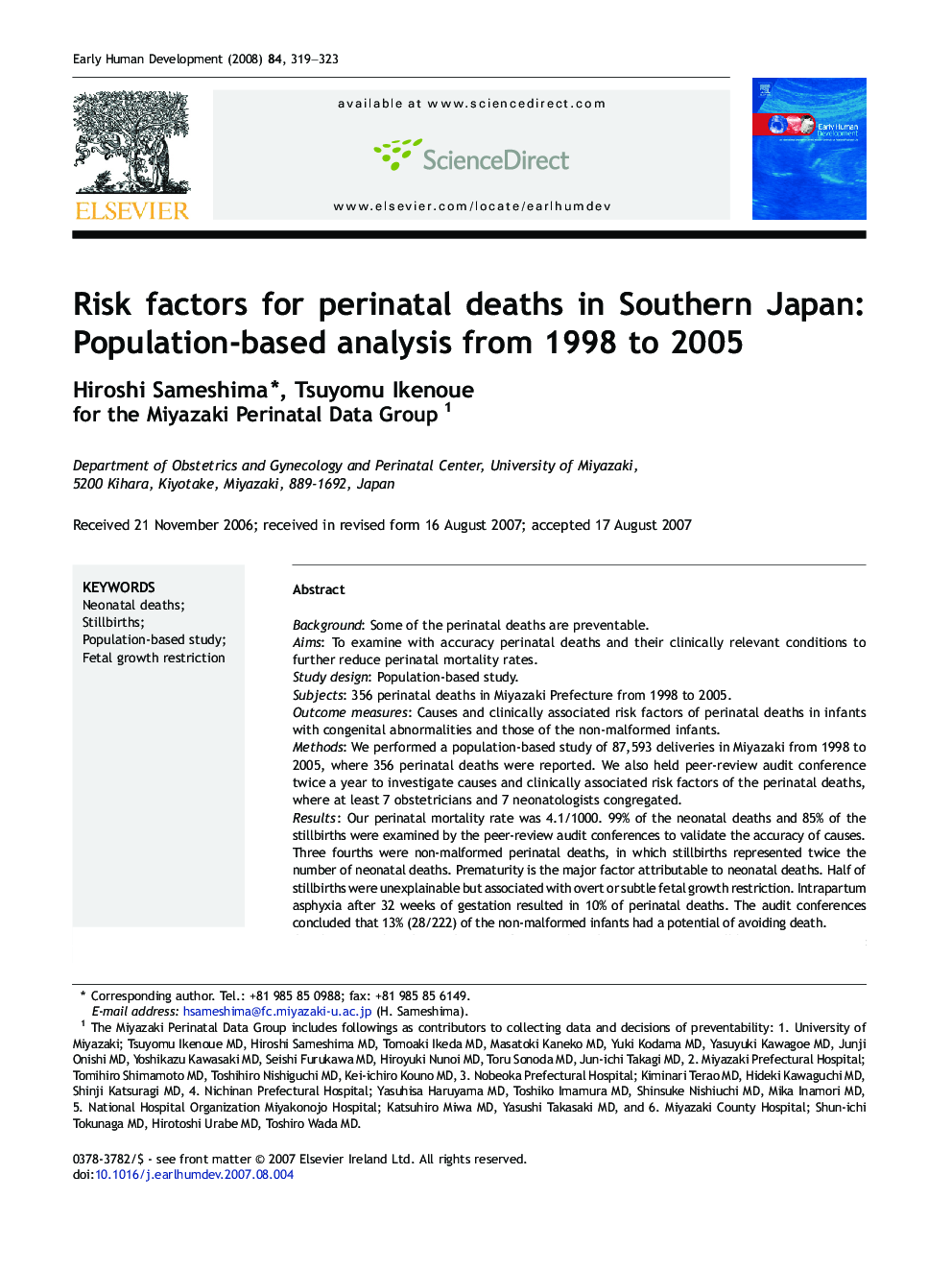| Article ID | Journal | Published Year | Pages | File Type |
|---|---|---|---|---|
| 3917619 | Early Human Development | 2008 | 5 Pages |
BackgroundSome of the perinatal deaths are preventable.AimsTo examine with accuracy perinatal deaths and their clinically relevant conditions to further reduce perinatal mortality rates.Study designPopulation-based study.Subjects356 perinatal deaths in Miyazaki Prefecture from 1998 to 2005.Outcome measuresCauses and clinically associated risk factors of perinatal deaths in infants with congenital abnormalities and those of the non-malformed infants.MethodsWe performed a population-based study of 87,593 deliveries in Miyazaki from 1998 to 2005, where 356 perinatal deaths were reported. We also held peer-review audit conference twice a year to investigate causes and clinically associated risk factors of the perinatal deaths, where at least 7 obstetricians and 7 neonatologists congregated.ResultsOur perinatal mortality rate was 4.1/1000. 99% of the neonatal deaths and 85% of the stillbirths were examined by the peer-review audit conferences to validate the accuracy of causes. Three fourths were non-malformed perinatal deaths, in which stillbirths represented twice the number of neonatal deaths. Prematurity is the major factor attributable to neonatal deaths. Half of stillbirths were unexplainable but associated with overt or subtle fetal growth restriction. Intrapartum asphyxia after 32 weeks of gestation resulted in 10% of perinatal deaths. The audit conferences concluded that 13% (28/222) of the non-malformed infants had a potential of avoiding death.ConclusionIn the advanced region of perinatal medicine in Japan, we still have room to improve perinatal mortality. Most prevalent factors were fetal growth restriction, intrapartum asphyxia after 32 weeks of gestation, and sudden fetal deaths of undiagnosed diabetes near-term.
